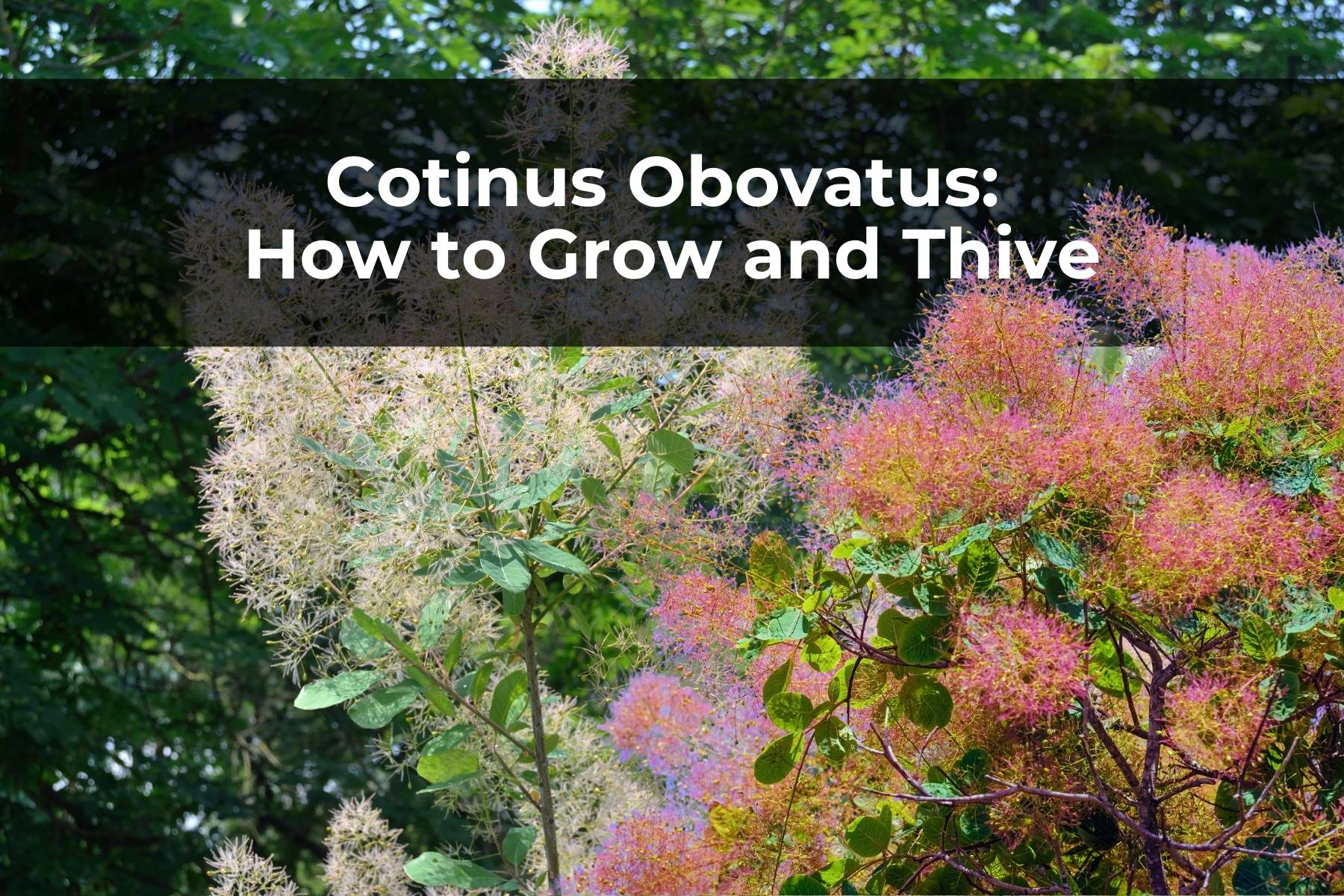Last Updated on June 12, 2023 by Real Men Sow
Cotinus Obovatus, American Smoketree is often incorrectly described as having large, showy, pink flowers. Smoketree’s common name comes from the long, billowy hairs that are attached to the spent flower clusters. These hairs change from a smoky pink to a purplish-pink during summer and cover the tree in smoke-like puffs. The berries are found on pinkish stems that then turn to small, dark seeds. Spring leaves turn bluish-to dark green from silky pink to bluish-to drab.
The fall leaves are spectacularly vibrant, with vivid shades of purple, orange, yellow, and yellow. C. obovatus is known for having the most beautiful fall colors of all North American naive tree species. The color can last for up to a month. The plant’s unusual fish-scaled bark pattern and gnarled limb structure give it winter interest. It is truly a four-season display. The heartwood, which is deep orange-yellow in color, was used to make orange and yellow dyes. This was especially true during the Civil War. The tree was almost exterminated for its dye.
Growing Conditions for the Cotinus Obovatus to Thrive
Cotinus Obovatus can be either a small, upright tree or a multi-trunked shrub depending on its pruning. It can reach maturity at a height of between 15 and 30 feet. This tree should live for at least 60 more years. It can adapt to all soil types and is considered hardy. The tree thrives in full sun and alkaline soils, but it can also tolerate shade, slightly acidic soils, and compacted soils. It is not tolerant to excessively rich soil, over-watering or over-fertilizing. It is drought-tolerant and resistant to disease.
Effects of Cotinus Obovatus on Wildlife
American Smoketree provides nesting and cover for both birds and mammals. Native finches love the small seeds of the female plants. Although the tree attracts butterflies and bees, it is not considered a magnet for pollinators. It is said to be deer-resistant, while others say it is moderately resistant.
Plant Diseases of Cotinus Obovatus
The tree is usually disease-resistant. Verticillium Wilt is the most serious problem. However, the tree is also susceptible to leaf spots and rust. These are usually not serious problems.
How to incorporate it into a Landscape
This plant is a great accent plant because of its long-lasting summer smoke display. You can also use it as a hedge or massed around a border. Because of its size, it is suitable for planting near utility lines. The tree’s fibrous root system is ideal for planting near walkways and patios.
Pruning the Cotinus Obovatus
When should you prune lightly?
Prune in the spring or late winter. These should be pruned in the late summer or early fall to facilitate quick healing of cut surfaces. To reduce the risk of dying, deciduous magnolias should be pruned in late-summer.
How to prune lightly
Routine pruning is not necessary. Take out diseased, damaged or crossed shoots. You can also trim shoots that are growing in unwelcome directions. After pruning, mulch then feed.


